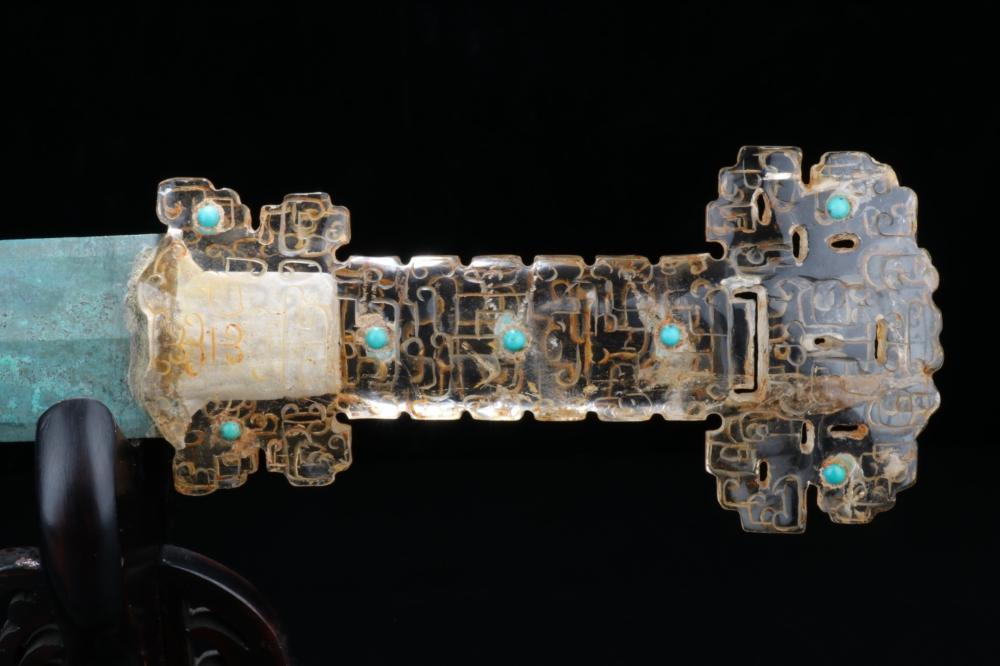The Chinese bronze sword from the Warring States period (4th-2nd century B.C.) is a valuable relic that reflects the cultural and artistic development of ancient China during a tumultuous time. With its slender blade and a hilt adorned with rock crystal, turquoise, and gold, it not only showcases the exquisite craftsmanship of its artisans but also reveals the wealth and power of its owner.

In the context of political fragmentation and continuous warfare, this sword symbolizes excellence in engineering and artistry. The decorated hilt not only enhances the sword’s aesthetic appeal but may also convey a sense of power and protection due to the presence of rock crystal, a material believed to possess mystical qualities.

This bronze sword holds significant aesthetic value as well as serves as a testament to the political and military tensions of the Warring States period. Its intricate craftsmanship and rare materials suggest it may have been commissioned by a powerful figure, such as a military commander or aristocrat, reinforcing the social status of its owner.

Ultimately, this bronze sword is not just a work of art but also an important part of China’s cultural heritage, helping modern researchers gain a deeper understanding of the rich history of this nation.

